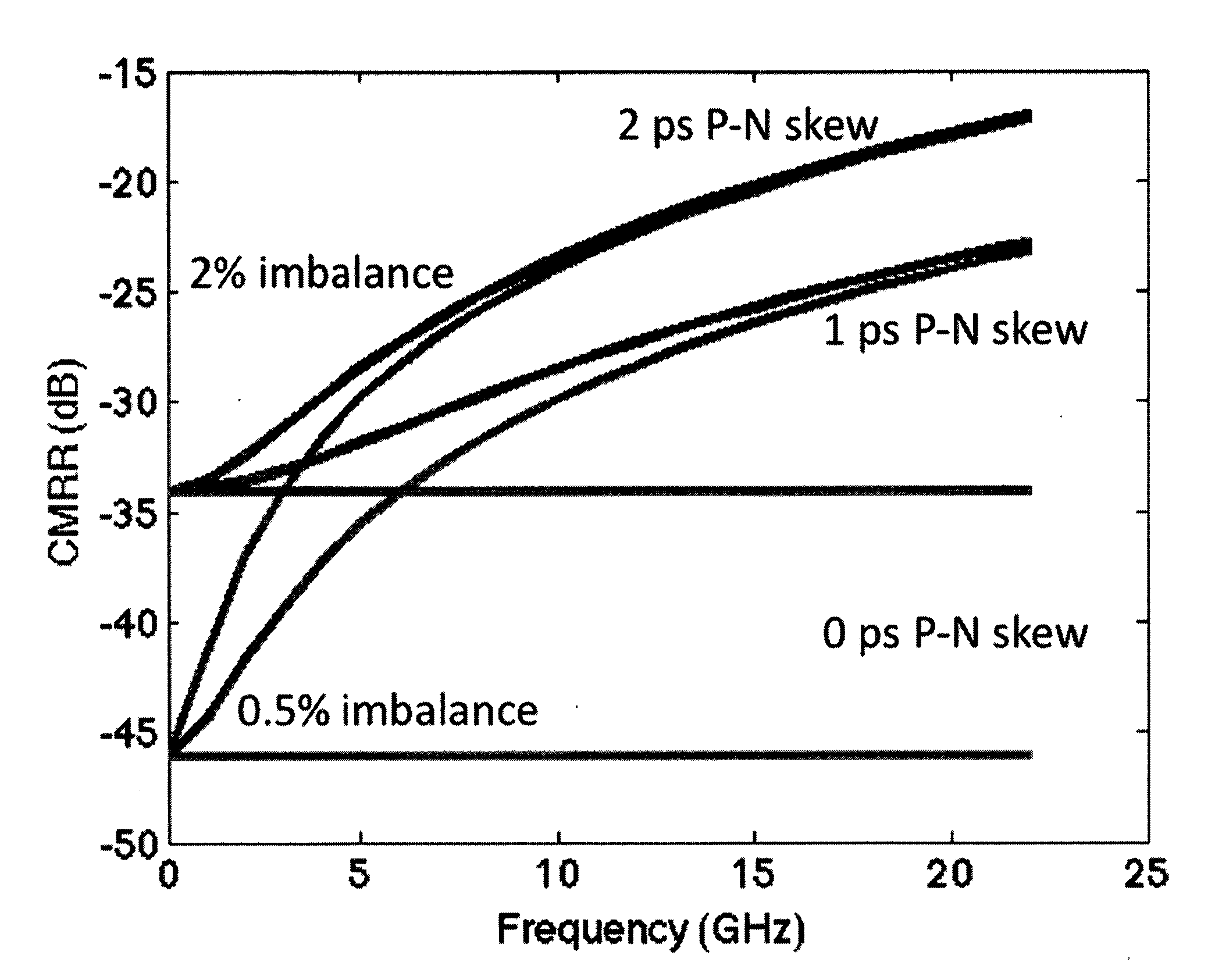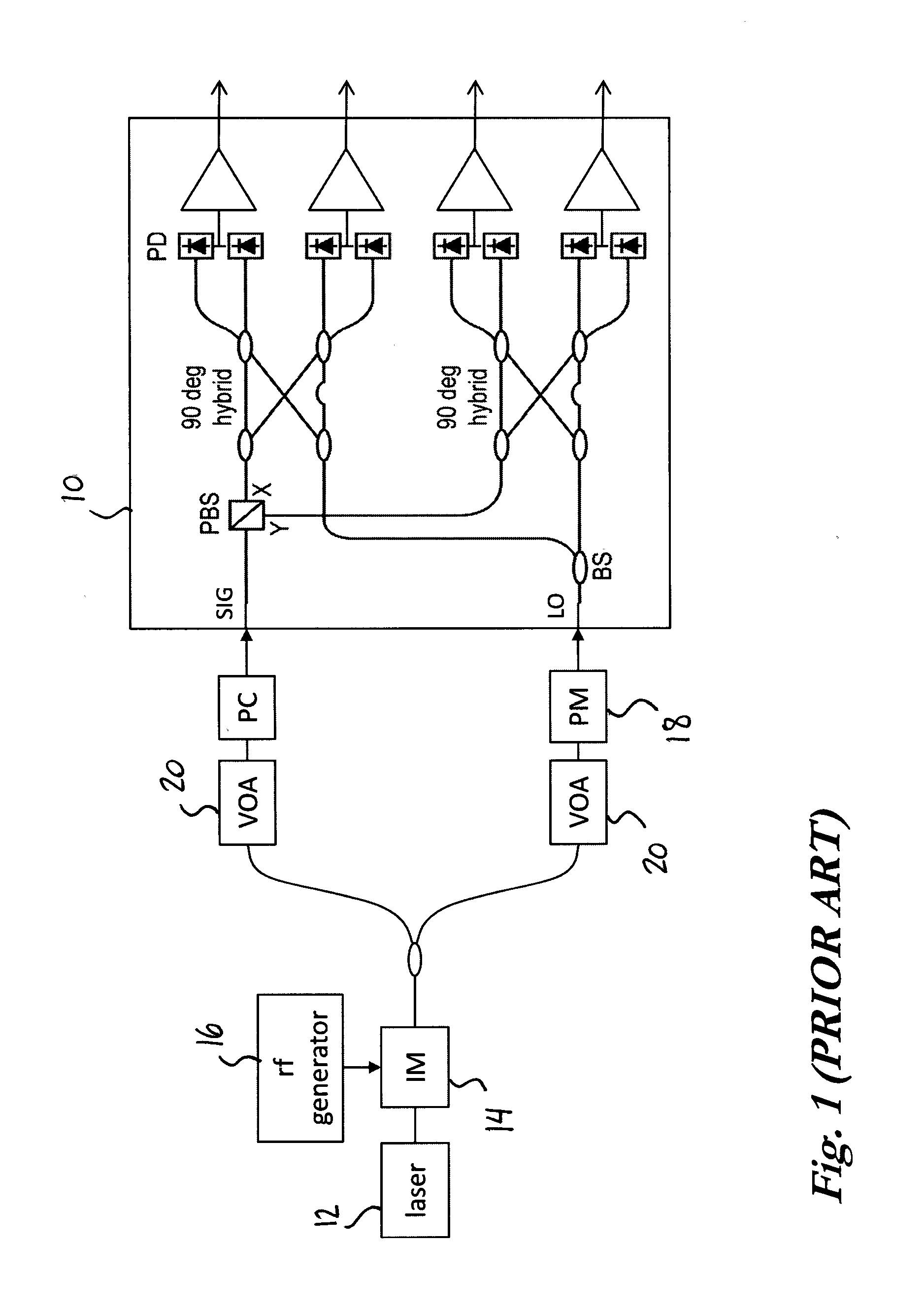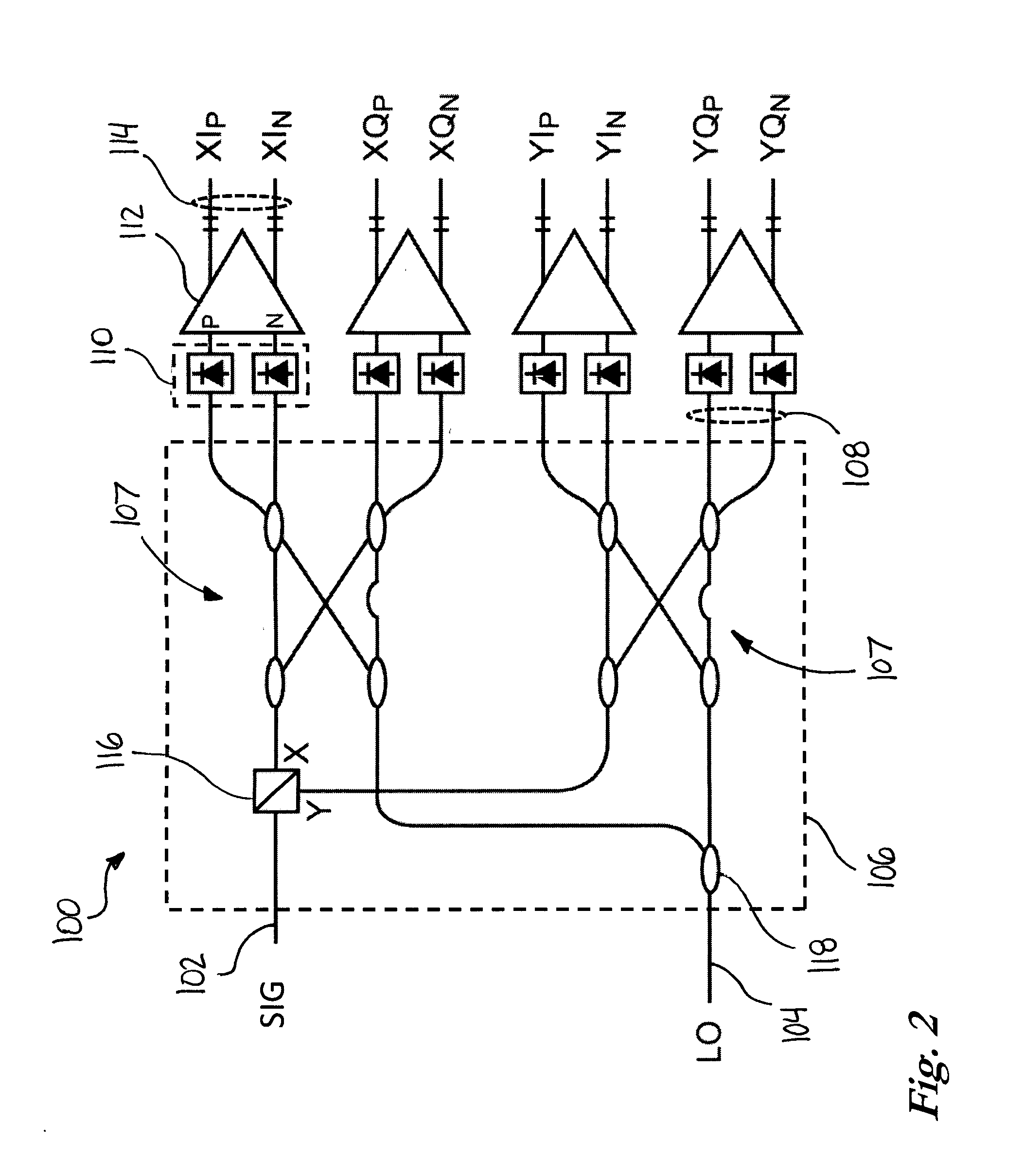Method and system for common-mode-rejection-ratio (CMRR) characterization of an integrated coherent receiver
a receiver and common-mode rejection technology, applied in electromagnetic receivers, electromagnetic transmission, transmission monitoring, etc., can solve the problem that the exact value of intermediate frequencies is not generally known with the same high precision, and achieve the effect of reducing the overall cost of test hardwar
- Summary
- Abstract
- Description
- Claims
- Application Information
AI Technical Summary
Benefits of technology
Problems solved by technology
Method used
Image
Examples
case 1
[0109] If Δf is small, then direct use of the set values (fIF=fIF,set) has no significant impact on measured ICR parameters to within some predetermined measurement tolerance, and hence there is no need to seek greater accuracy of the measured tone at frequency fIF (e.g. via an algorithmic procedure as outlined with reference to “Case 3” hereinbelow). Here M=Mset.
[0110]The CMRR measurement itself is generally not highly dependent on the exact value of fIF. However, other related measurements that may also be performed in the context of ICR characterization might be more stringent in this regard. For instance, measurement of the hybrid phase error is quite sensitive to the value of fIF and hence a systematic offset in fIF may introduce a non-negligible measured phase error, whereas the effect of a randomly-varying offset in fIF normally would be less detrimental, as this randomly-varying offset could be reduced via averaging. FIG. 10 presents the results of a simulation of the IQ-ell...
case 2
[0111] When the uncertainty Δf is very high (e.g. Δf>fs / 2), little or no improvement in the fIF accuracy can be attained via analysis of the Fourier spectra of e.g. the complex IQ field, since the folding ratio (M) associated with the aliasing will often be incorrect. Hence, CMRR evaluation via undersampling would normally not be feasible for this case.
case 3
[0112] If the uncertainty Δf is of a level intermediate to that of Cases 1 and 2 above, i.e. for which direct estimation according to Case 1 would not be fully reliable but for which Δfs / 2, enabling the correct folding ratio M to be estimated in terms of Mset, then the accuracy of the estimated fIF can be improved by Fourier analysis. FIG. 11 shows an example where Δfs / 2 and fIF,set is close to 5fs / 2. Hence, the true fIF may fall either below or above 5fs / 2 (i.e. the corresponding folding ratio may be M=2 or M=3, respectively), as indicated by the shaded frequency range, which extends from (fIF,set−Δf) to (fIF,set+Δf). As a result of aliasing, this true frequency range is folded to an aliased frequency range extending from −fs / 2 to +fs / 2, for the case where in-phase and quadrature-phase signals are simultaneously sampled. (If only one of in-phase and quadrature-phase signals were sampled, then the aliased frequency range would extend only from 0 to +fs / 2.) Since Δfs / 2, there is a “g...
PUM
 Login to View More
Login to View More Abstract
Description
Claims
Application Information
 Login to View More
Login to View More - R&D
- Intellectual Property
- Life Sciences
- Materials
- Tech Scout
- Unparalleled Data Quality
- Higher Quality Content
- 60% Fewer Hallucinations
Browse by: Latest US Patents, China's latest patents, Technical Efficacy Thesaurus, Application Domain, Technology Topic, Popular Technical Reports.
© 2025 PatSnap. All rights reserved.Legal|Privacy policy|Modern Slavery Act Transparency Statement|Sitemap|About US| Contact US: help@patsnap.com



